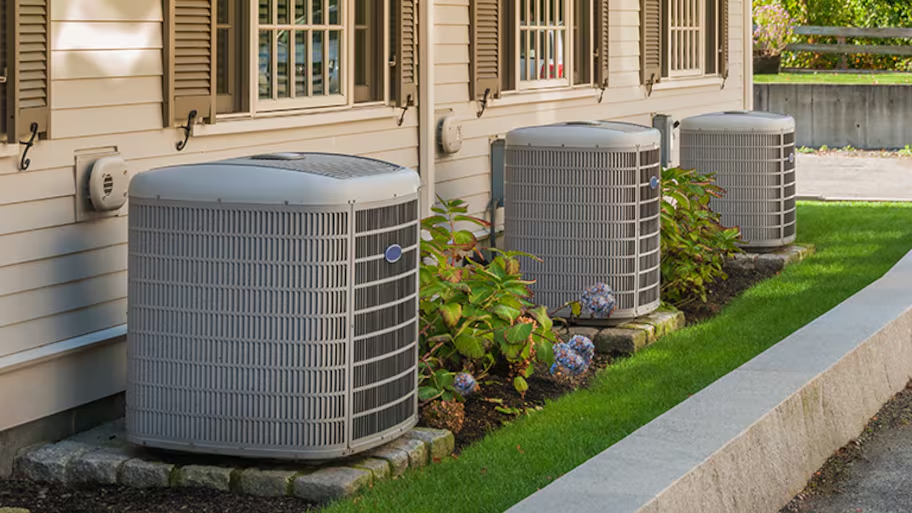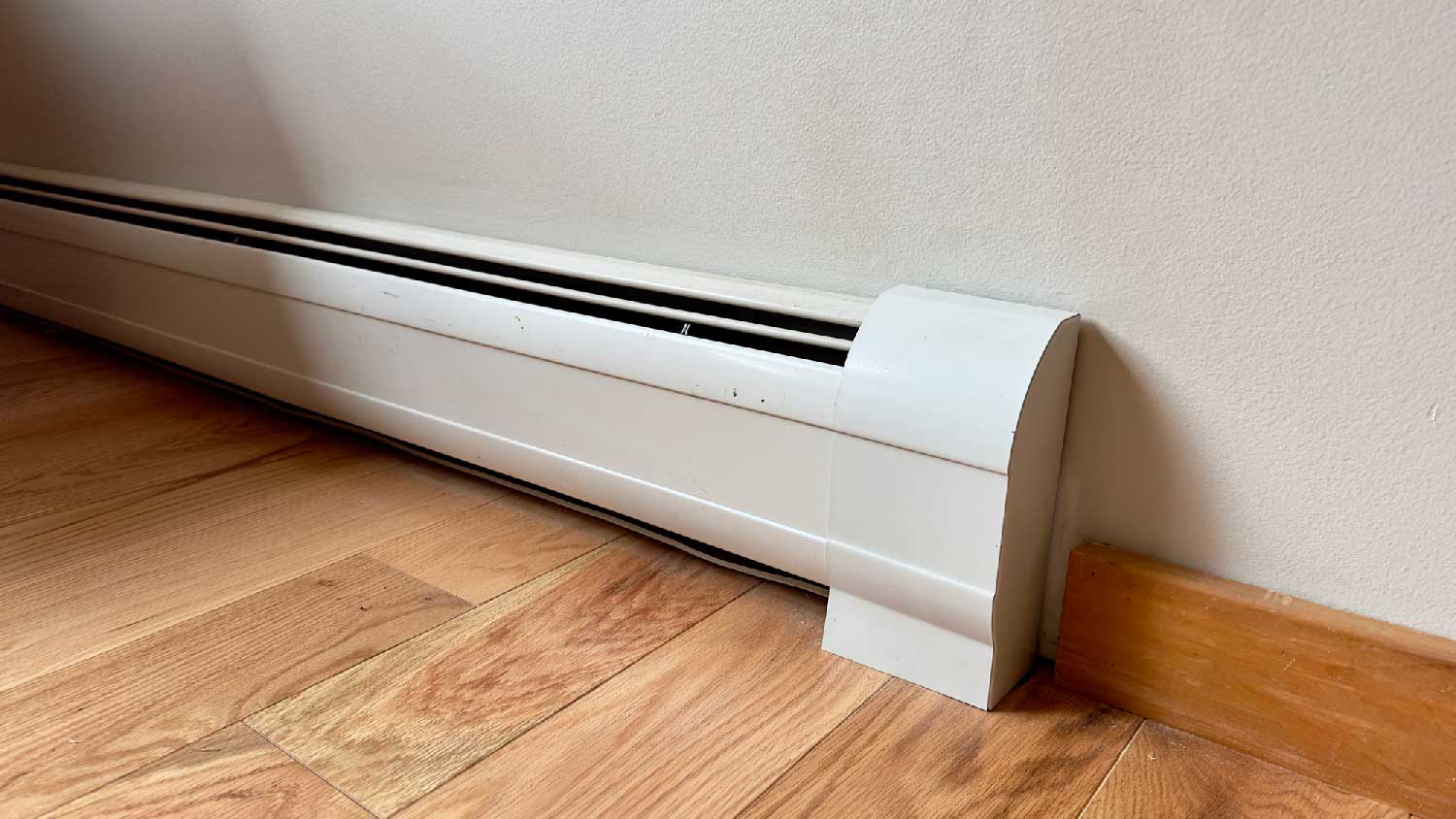
HVAC replacement costs depend on a lot of factors, like unit type, size, and labor. See what you can expect to pay for HVAC replacement here.
Home too damp or too dry? Give these devices a try


Humidifiers add moisture to the air and are ideal for dry climates or winter months.
Dehumidifiers remove excess moisture and are best suited for humid environments or moisture-prone areas.
Humidifiers alleviate dryness-related issues like dry skin and respiratory problems, while dehumidifiers reduce humidity-related concerns like mold allergies and asthma.
Humidifiers require more frequent maintenance due to potential mineral buildup, mold, and bacteria, whereas dehumidifiers only need occasional cleaning and water tank emptying.
Your home’s humidity is important to keep in check—if the space is overly dry, it can cause issues like skin and respiratory problems, while a space that’s too humid can exacerbate allergies and lead to mold and mildew. Choose between a humidifier vs. dehumidifier to find the perfect balance, depending on your area’s climate and the conditions within your home. This guide will review the main differences between humidifiers and dehumidifiers so you can choose which one is best for your home.
Humidifiers and dehumidifiers serve opposite functions when it comes to improving indoor air quality. While humidifiers add moisture to the air, making dry environments more comfortable, dehumidifiers remove excess moisture, helping to reduce humidity levels in damp areas. Humidifiers are ideal for dry climates and winter months when heating systems can dry out the air, whereas dehumidifiers are ideal for humid climates, flooded spaces, or areas prone to mold and mildew due to excessive moisture.

A humidifier is a device designed to increase the humidity level, either in a room or an entire home, by releasing water vapor into the air. This added moisture can help alleviate the symptoms associated with dry air, such as dry skin, irritated sinuses, and respiratory issues.
Humidifiers are especially handy during the winter months when the air tends to be drier. Installing a whole-house humidifier is a permanent solution that increases the moisture level across your entire home, with installation help from a local humidifier professional.
| Pros | Cons |
|---|---|
| Improves respiratory comfort | Can promote mold or mildew growth if overused |
| Reduces static electricity | Requires regular cleaning to prevent bacteria and mineral buildup |
| Helps keep indoor plants healthy | Can be noisy |
Best for:
Homes with children and in playrooms and living rooms
Households without allergies or respiratory concerns
People living in dry climates
Portable or whole-house humidifiers are beneficial for improving air quality in dry environments. By adding moisture to the air via a steady stream of water vapor, they can ease respiratory issues, prevent dry skin, and even help indoor plants thrive. Humidifiers are also valuable for preserving wooden furniture and instruments, as they help prevent cracking and warping caused by dry air.
While humidifiers offer many benefits, they also come with a few drawbacks. If overused, they can cause mold and mildew growth, especially in climates where the air is already humid. Regular maintenance is also essential, as the devices need to be cleaned frequently to prevent the buildup of bacteria, mold, and mineral deposits. Humidifiers can increase energy costs over time, especially when they’re left on continuously.

The function of a dehumidifier is to remove excess moisture from the air, helping to maintain an optimal humidity level in a room or home. This process is especially useful in preventing mold growth, reducing dust mites, and improving overall indoor air quality in humid environments. You can install a whole-house dehumidifier to spread these benefits across your entire home, not limited to one area like a portable device.
| Pros | Cons |
|---|---|
| Reduces mold and mildew | Can make the air too dry if overused |
| Improves air quality and reduces allergens | Requires regular emptying of water tank |
| Helps prevent structural damage to homes | Can be noisy |
Best for:
Homes in humid climates or areas prone to dampness
Individuals with allergies, asthma, or respiratory issues
Basements, bathrooms, and other moisture-prone areas
Dehumidifiers are excellent for reducing excess moisture in the air, which can help prevent the growth of mold and mildew—a common issue in humid environments. That makes them beneficial for individuals with allergies or asthma, since mold and mildew can worsen the symptoms. What’s more, studies have shown that dehumidifiers can slow the growth of dust mites when they keep humidity levels at 50% or lower. Additionally, dehumidifiers can help prevent structural damage to homes by reducing the likelihood of wood rot, peeling paint, and other moisture-related issues.
Despite their benefits, dehumidifiers have some downsides. For starters, overusing them can make the air too dry, leading to issues like dry skin and respiratory problems. Dehumidifiers also require regular maintenance, including emptying the water tank and cleaning the unit to ensure it operates efficiently. Noise is another common complaint with dehumidifiers, as the compressor can be quite loud in certain models.
Use this side-by-side comparison to determine whether a humidifier versus a dehumidifier is the right choice for your home.
While both humidifiers and dehumidifiers can help you breathe easier, dehumidifiers can purify air over time. This is mainly because they help prevent mold, mildew, and dust mites. However, if your main concern is air purification, consider purchasing an air purifier versus a humidifier or dehumidifier, as this will be a more effective solution.
Dehumidifiers are built to withstand continuous operation in moisture-heavy environments, making them more durable over time compared to humidifiers, which may require more frequent replacement due to the buildup of minerals and bacteria.
Humidifiers are more affordable than dehumidifiers, especially for smaller, portable models. While prices can vary widely depending on the features and size of the unit, humidifiers generally offer a cost-effective solution for adding moisture to the air on any budget. The average whole-house humidifier cost is $580, while the average cost of adding a whole-house dehumidifier is $1,500.
Dehumidifiers typically don’t require maintenance as often as humidifiers. While both of these devices need regular cleaning, humidifiers require more attention due to the potential for mineral deposits, mold, and bacteria growth. Dehumidifiers simply require emptying the water tank and occasionally cleaning the filter.
Humidifiers operate more quietly than dehumidifiers, making them a better fit for bedrooms or areas where noise sensitivity is a concern. Dehumidifiers tend to be louder due to the compressor and fan used in their operation.
A common concern is whether a dehumidifier cools a room or if the cool mist of a humidifier will bring down a room’s temperature, but neither of these has an impact. A humidifier’s mist may feel cool to the touch, but this doesn’t affect the room’s ambient temperature. A dehumidifier won’t cool a room either, although it can help you feel cooler and more comfortable due to the lower level of humidity.
Humidifiers are often smaller and more portable than dehumidifiers, making them easier to move from room to room as needed. Dehumidifiers, particularly larger dehumidifier sizes, can be bulky and difficult to relocate.
Portable dehumidifiers and humidifiers can work within a limited space, but what if you need them to work throughout your home? Can a dehumidifier be added to a furnace? How about a humidifier? The answer is yes to both. Get in touch with a local licensed HVAC technician to learn more about adding one to your home.
Whole-house dehumidifiers can potentially make a home more attractive to buyers, especially in areas where high humidity is a major concern. Plus, since they help prevent mold and mildew, they might help you avoid a costly mold remediation job down the line. They’re also useful for preserving the wood and overall structural integrity of a home, which can translate into future long-term savings.
From average costs to expert advice, get all the answers you need to get your job done.

HVAC replacement costs depend on a lot of factors, like unit type, size, and labor. See what you can expect to pay for HVAC replacement here.

Discover the primary whole-house air filtration system cost factors when installing one in your home to help remove airborne contaminants and allergens.

Heating and cooling system on the fritz? Discover the factors that go into HVAC repair costs and how you can save money on this crucial home update.

Discover the average wall heater installation cost, key price factors, and expert tips to help you budget and save on your next home heating project.

A central humidifier can make dry winter air more comfortable indoors. Before your installation, discuss these whole-house humidifier questions with a pro.

The cost to winterize a mobile home depends on several factors, including type and location. Our guide will show you how much it costs to winterize a mobile home.